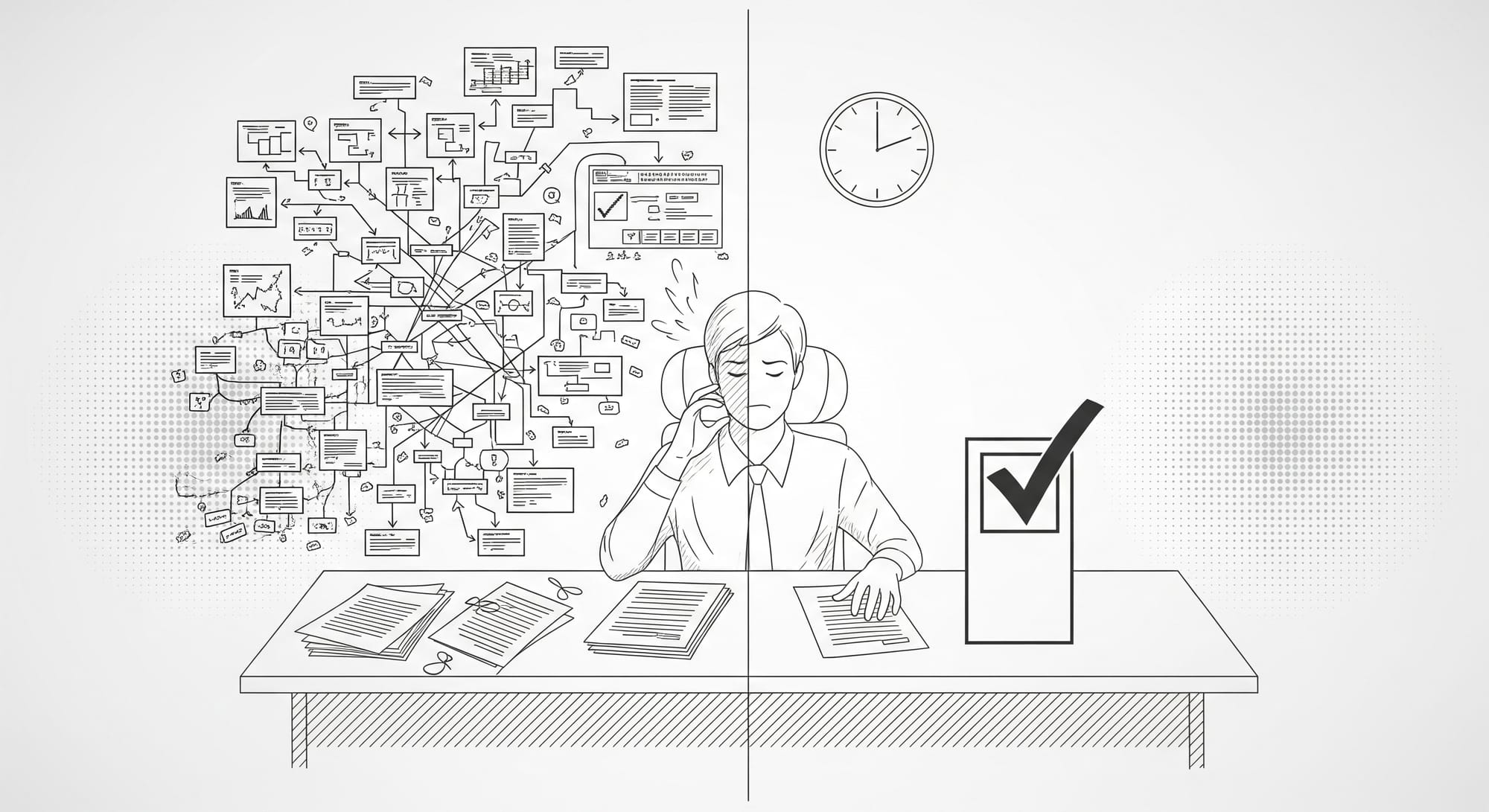People Buy Time, Not Features

Most creators are building products they think people want. Not products people actually want.
They start with what they think is impressive instead of what helps.
They pack in seventeen features when people need one thing that works.
They create comprehensive guides when someone just wants to stop wasting three hours every week.
Here's what I learned after watching my own products flop: People don't buy products. They buy time back and problems solved.
The Wrong Way to Think About Products
I used to build products like I was trying to impress other creators. Look at all these modules! Check out this bonus section! See how thorough this is!
Nobody cared.
Because when someone's drowning in their daily workflow, they don't want a swimming encyclopedia. They want a life preserver.
The wrong approach focuses on:
- How comprehensive you can make it
- How many bonuses you can stuff in
- How impressive it sounds to other experts
- What you think people should want
What People Actually Buy
They buy solutions to problems they face right now. Specific problems. Annoying problems. Problems that cost them time, money, or sanity.
Your audience isn't sitting around thinking, "I need a complete business transformation." They're thinking, "I need to stop spending two hours writing one newsletter" or "I need a simple way to organize my content ideas."
That's it. That specific. That immediate.
The Time Value Equation
Here's the math that matters: If your product saves someone five hours and their time is worth $50 an hour, you're delivering $250 in value. Price accordingly.
But most creators price based on what they'd pay, not what it's worth. Or they underprice because they're afraid of seeming greedy.
Stop that. Cheap signals worthless. Fair signals valuable.
What Actually Sells
Templates that work. Not pretty templates. Working templates. The email sequence that gets responses. The content calendar that someone actually uses.
Simple systems. Step-by-step processes for specific problems. How to write product descriptions that convert. How to organize ideas without drowning in complexity.
Shortcuts you've tested. The tool that saved you hours. The method you figured out through trial and error. The mistake-avoidance checklist.
People will pay for your experience if it saves them from learning the hard way.
How to Know What to Build
Ask your audience what wastes their time. Then build the smallest possible thing that fixes it.
Not a course. Not a comprehensive system. A single solution to a single problem.
I made more money with a simple email template than I did with a 200-page guide. Because the template solved one problem completely. The guide tried to solve everything partially.
The Real Product
Your product isn't your course or template or system. Your product is the outcome it creates.
The outcome isn't "learn email marketing." It's "write newsletters in 30 minutes instead of three hours."
The outcome isn't "understand productivity." It's "stop feeling overwhelmed by your task list."
Sell the outcome. Deliver it as simply as possible. Price it based on the value it creates.
Stop trying to impress people with how much you know. Start helping them get their time back.
That's what they'll actually pay for.
What's the biggest time-waster in your creative process right now? Hit reply and tell me what's eating up your hours.
Member discussion